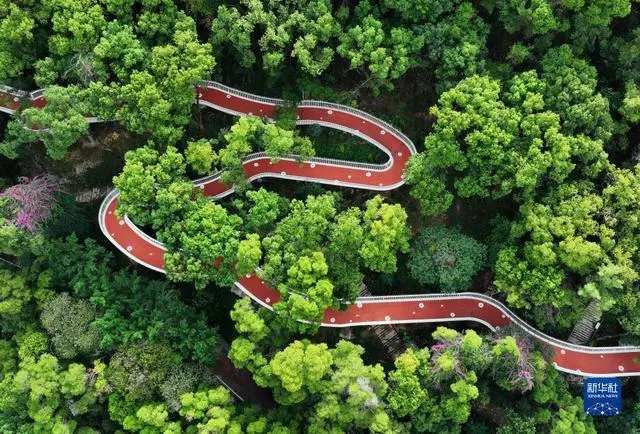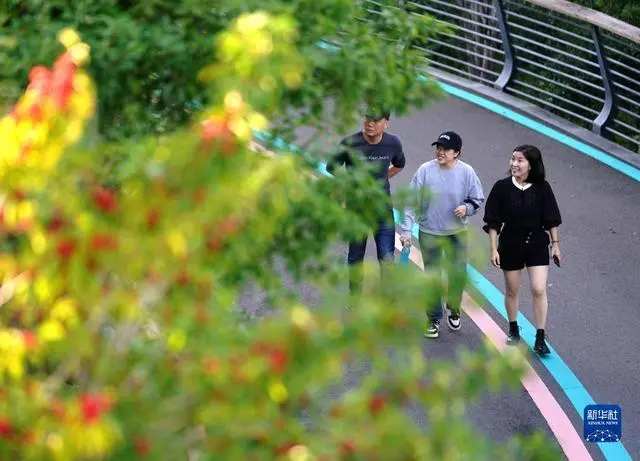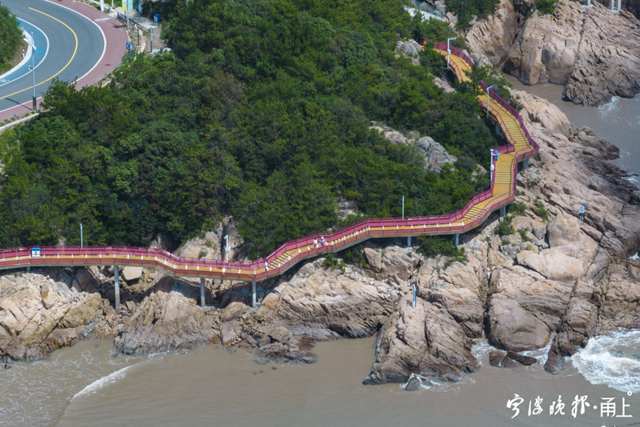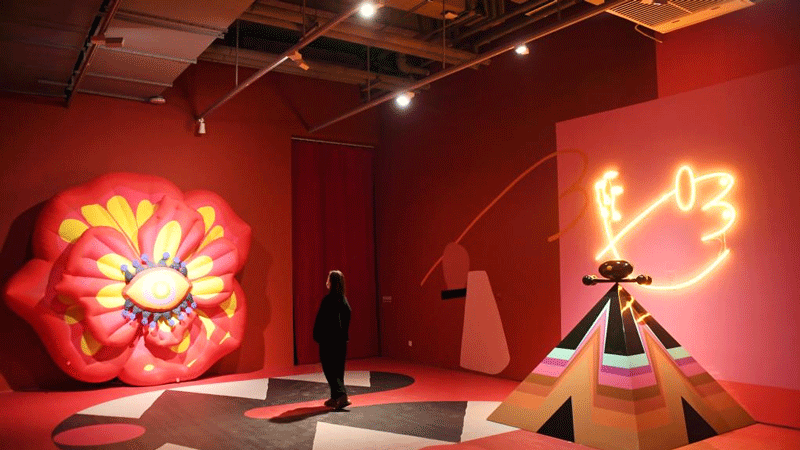Pedestrian, bicycle systems offer more convenience to Chinese people
Chinese cities have successfully integrated reliable pedestrian pathways and bicycle friendly infrastructure into their development plans, affording greater convenience to many.

Aerial photo shows a footpath at the Jinjishan park in Fuzhou, southeast China’s Fujian Province. (Photo/Xinhua)
An exemplar of such achievements is found in the 14th Five-Year Plan period (2021-25), which has seen all roads with a width of 12 meters or more inside the Fifth Ring Road in Beijing provided with bike lanes. In addition, Shenzhen in south China plans to build lanes for non-motorized vehicles that exceed 300 kilometers each year. Southwest China’s Chongqing Municipality, not a city to be left behind, also aims to build 2,200 kilometers of footpaths and 450 kilometers of bike lanes.
Many more city dwellers are willing to choose urban pedestrian and bicycle systems. In 2021, the number of shared bicycle users in Beijing hit 950 million, and travel by pedestrian and bicycle systems made up 47.8 percent of the traffic in the downtown area of the city, marking a 10 year high. In 2021, pedestrian and bicycle traffic in Shenzhen grew from 58 percent in 2016 to 62 percent, and that in some middle-sized and small cities exceeded 70 percent.
A Beijing resident surnamed Gao noted that his favorite cycling route begins in the Central Green Forest Park in suburban Beijing and continues past an ancient wharf site, ending with a ride along the Grand Canal.
Cycling has become an indispensable part of his life. “I can see the development and improvement of the city while riding in the downtown area, and enjoy the natural beauty in suburbs. It’s not just about physical exercise, but also about recreation and socializing with new friends,” Gao said.

Citizens enjoy views along the footpath at a park in Fuzhou, southeast China’s Fujian Province. (Xinhua/Wei Peiquan)
Like Gao, Yang Xinmiao, the deputy director of the Transport Institute at Tsinghua University, is also a cycling enthusiast. Yang described how Beijing has seen more bike lanes, expanded non-motorized vehicle lanes, and provided a safer environment for cyclists in the past two years. These efforts have all made cycling the transport of choice for more and more people.
The popularity of pedestrian and bicycle systems is primarily associated with convenience. In Yang’s experience, cycling is almost as fast as driving over a relatively short distance, and cycling and walking are even faster when considering traffic build-ups.
Improvements in pedestrian and bicycle systems have improved the Chinese people’s cycling experience. Another reason is that these systems can soothe people’s mood and make urban life even better.
“China announced that peak carbon dioxide emissions will be seen by 2030 and that achieving carbon neutrality will be realized by 2060. Changes in modes of transport is beneficial to realizing these goals,” Yang said.
Yang explained that walking and cycling are green modes of transport. If a vehicle user chooses to travel by bike, they can cut carbon emissions by over 1 tonne per year.

Photo shows a seaside footpath in Xiangshan county, Ningbo city, east China’s Zhejiang Province. (Photo/Ningbo Evening News)
Zhou Le, deputy chief engineer of the Urban Transport Institute at the China Academy of Urban Planning and Design said that China needs to make pedestrian and bicycle systems more human-centered.
More room needs to be left for pedestrians and cyclists when urban plans are made, and more supporting facilities such as shade trees and lighting equipment shall be ensured to make pedestrian and bicycle systems more attractive and environment-friendly, Zhou reckoned.
Yang pointed out that while certain areas must be designated to improve the safety of cyclists and drivers the right of way of cyclists and pedestrians must be ensured. A point with which Zhou also agreed.
If trunk roads and public transport systems are an artery, then pedestrian and bicycle systems are capillaries. Both parts must work in close collaboration to make urban transport work as efficiently as possible. Footpaths and bike lanes need to be better connected to subway stations and bus stations, and other public transport facilities.
Photos
Related Stories
Copyright © 2022 People's Daily Online. All Rights Reserved.









